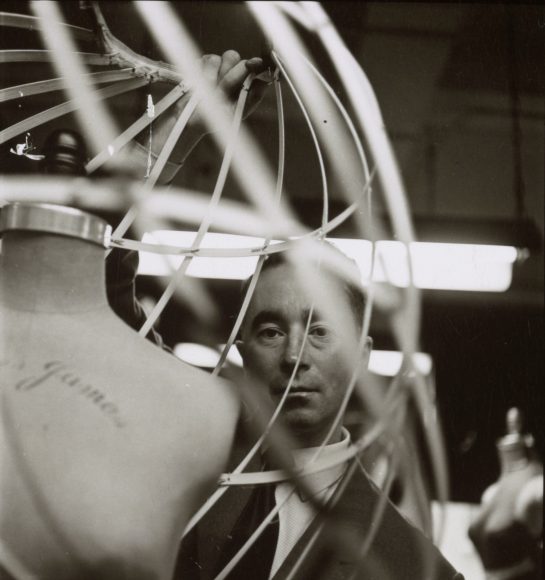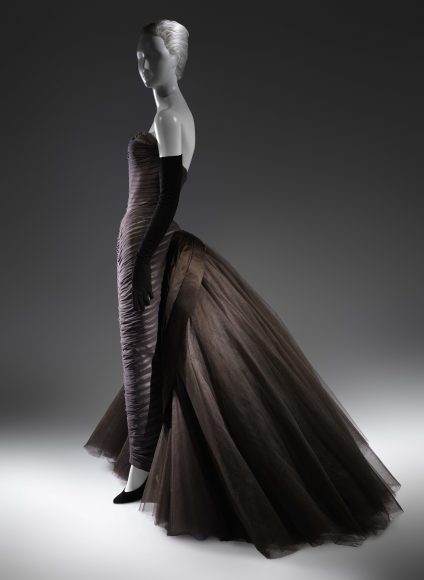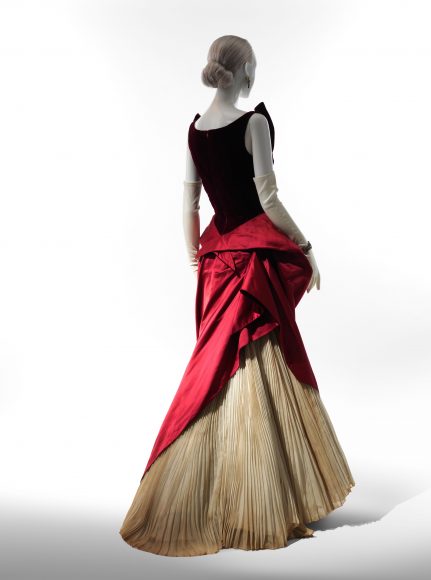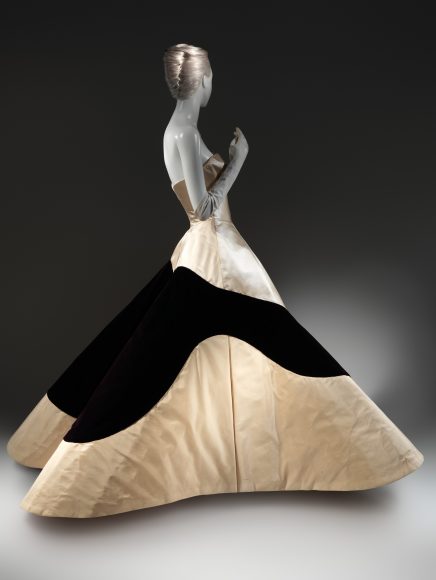In 1953, the fashion designer Charles James received the Neiman Marcus Award. For the occasion, he dressed in a white silk tuxedo, pumps – and blue jeans.
Why jeans? Because they’re functional, and what was functional, he reasoned, was also erotic.
James (1906-78) believed that clothes – even ball gowns – should be functional, erotic and above all, artistic. And so he brought to mid-20th century couture the artist’s and the engineer’s sensibility for structured, sculpted eveningwear – at once angular and undulating but always organic – that demonstrated new ways of draping, folding and using darts and seams, or none at all. The results were gowns graced by the high priestesses of high society like Babe Paley and photographed by Cecil Beaton – which have found their way into an exhibit at the new Anna Wintour Costume Center at The Metropolitan Museum of Art in Manhattan. It includes the 4,200-square-foot main Lizzie and Jonathan Tisch Gallery; the Carl and Iris Barrel Apfel Gallery; a state-of-the-art costume conservation center; an expanded study/storage facility that houses the combined holdings of The Met and the Brooklyn Museum Costume Collection; and The Irene Lewisohn Costume Reference Library, one of the foremost of its kind in the world.
“Charles James: Beyond Fashion” (through Aug. 10) stretches out beyond the Wintour Center, where you’ll find daywear and archival material in the très intime Tisch and Apfel galleries on the ground floor. Begin, however, with the portion of the show that’s in the special exhibition galleries on the first floor. There you’ll find a breathtaking display of 15 ball gowns in a technological setting that is guaranteed to captivate even those with no interest in fashion. (The show is organized by Harold Koda and Jan Glier Reeder working with architecture and design firm Diller Scofidio + Renfro (DS + R).
The gowns are spotlighted on pedestals in a black box setting with mirrors and wires that make it seem as if the mirrors are everywhere. As a camera with a long arm comes up to roam over each piece, the viewer sees how the dress was made and the final result on a model or society hostess – all on a screen. Among the most spectacular examples is the “Butterfly” Ball Gown, circa 1955, a strapless, form-fitting ruched affair in brown silk chiffon and cream and brown silk satin with a dark brown nylon tulle train that fans out behind the creation.
The gowns are at once timely and timeless, evoking ancient Greece (fluted drapery), the 18th century (fitted bodices with fanning skirts) and the Victorian era (corseted silhouettes, bell-shaped skirts and bustles). They reflect James’ gift for millinery. (The autodidact began as a hat-maker and, after designing in his native London and Paris, arrived in New York City in 1940.) They pay homage to the female body. (James, perhaps echoing Balenciaga and prefiguring Costume Institute Gala co-chair Oscar de la Renta, said he would give women figures they didn’t know they had.)
Above all, though, James’ art suggests an unusual mind. He likened the couturier’s craft to the soccer player’s journey. Both are more interested in the game than the victory.
“THERE IS NO GOING BACK,” he proclaims still from one of the quotes on the mirrored walls. “Study the past to know why, not what and from the WHY, dream and DO. There is no shortcut to creativity. There may also be no profit in it.”
For more, visit metmuseum.org.





